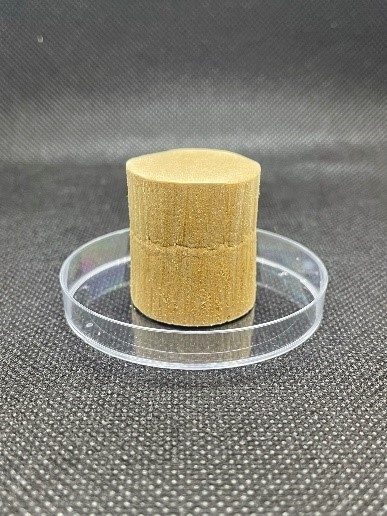Synthesis of jet fuel from wood by fast pyrolysis, steam cracking and conversion on ZSM-5 catalysts with optimal morphology
Project leader: Jonas Hedlund, jonas.hedlund@ltu.se
Other participants: Linn Berglund, Hoda Shafaghat
Platforms: CatSep, BioPolChem
Organisations: LTU, RISE
Status: Completed
Reference: B4E3-FM-1-01
Call: B4E3-FM-1, 2021-2022
We have carried out steam cracking of pyrolysis oil with the aim to convert the oil to ethylene and oxygen free aromatics suitable for further conversion to jet fuel. We observed that the components in the water fraction of the oil are reactive and form a gas with a high yield of ethylene. This gas is suitable for conversion to jet fuel on a ZSM-5 catalyst. However, the components in the oil phase of the pyrolysis oil were surprisingly stable during steam cracking at the conditions used. These compounds can perhaps be converted at more severe conditions than we can achieve in our current experimental setup. Bodies of ultra-thin ZSM-5 crystals have been successfully prepared by using nanocellulose as a dispersing agent and lignin as a binder material. A very good dispersion of the ultra-thin ZSM-5 crystals was confirmed using optical microscopy and scanning electron microscopy. These well-dispersed crystals seem ideal as catalysts. However, it turned out that the catalyst bodies were not strong enough to load in the reactor, and it was not possible to evaluate the catalytic properties of the nanocellulose dispersed ZSM-5 crystals, within the project. Further development of this catalyst is necessary. In parallel, an existing catalysis set-up was modified to allow pressures up to 100 bar. Much more work than planned was required to carry out this modification as detailed below. In the next step, optimal conditions for conversion of methanol to jet fuel using our ultra-thin ZSM-5 catalyst was identified. Then, a mixture of ethylene and benzene was fed to the reactor at the same conditions. This mixture was selected since it was the expected main product from the steam cracker. Initially, a very high yield of jet fuel components was observed. However, the catalyst deactivated quite rapidly, and it seems as this feed is unsuitable for yet fuel synthesis using a ZSM-5 catalyst. Since high yield of ethylene was observed after steam cracking of the water fraction of the pyrolysis oil, experiments with a feed of pure ethylene was also carried out. In this case, high yield of jet fuel components was observed for long time. Consequently, this project has shown that at least the water fraction of the pyrolysis oil can be successfully converted to jet fuel by steam cracking to ethylene followed by conversion to jet fuel on a ZSM-5 catalyst.
Keywords: Jet-fuel, ultra-thin ZSM-5 catalyst, steam cracking, pyrolysis, biomass

Catalyst body of ultra-thin ZSM-5 catalyst dispersed by nano-cellulose (top) and conversion of ethylene on ZSM-5 catalyst to jet fuel (C8+) in high yield (bottom).


 ©Anna Strom
©Anna Strom





 Bio4Energy 2022
Bio4Energy 2022